In the heart of Peccioli, a medieval village in the province of Pisa, an ambitious project has transformed an important part of the historic center into a virtuous example of urban regeneration. It is the Palazzo Senza Tempo, an architectural intervention inaugurated on July 1, 2021, signed by the MCA - Mario Cucinella Architects studio, born out of the Municipal Administration’s desire to unite historic heritage protection and new cultural vitality.
The goal? To restore meaning to a symbolic space and, at the same time, create an open, dynamic place capable of hosting events, temporary exhibitions, and community activities. An intervention that redefines the concept of public space in a historical context, without distorting it. In fact, the Timeless Palace is able to unite past, present and future.
The intervention was carried out along the edge of the medieval bastion, where the 15th-century Palace overlooking Via Carraia was brought back to life; the project also included the transformation of the ruined building below Via dei Bastioni, connecting it to the Palace in a new contemporary architectural volume, capable of dialoguing with the context without altering its balance. A gesture that combines memory and innovation, allowing the structure to rediscover a public and shared function.
The Palace is developed on several levels and culminates in a panoramic terrace of about 600 square meters, suspended over the Era Valley more than 20 meters above the ground. It is not a simple rooftop, but a true public plaza in the sky, reached by a side staircase that connects the street level with the lower levels, up to the -2 level.
The interior spaces have been redesigned to accommodate multifunctional spaces, intended for culture, leisure and socializing. The intervention has enhanced natural light through the inclusion of skylights and bow windows that open unexpected views of the Tuscan landscape, while the glazed roof placed on the passage of the historic courtyard adds transparency and visual continuity to the spaces.
The soul of the project also lies in the recovery of the stairwell located in the central axis of the Palace, which now directly connects the street level with the new architectural volume below. The latter is discreetly grafted into the landscape, the result of the transformation of the ruined building located below the historic Palace. The intervention generated a natural and degrading slippage of the existing line of the ramparts. Distributed on levels -1 and -2, the new space is configured as a transparent element, set in context. Its architecture, while contemporary, does not interrupt but enhances the perception of the context, opening up a new panoramic view.
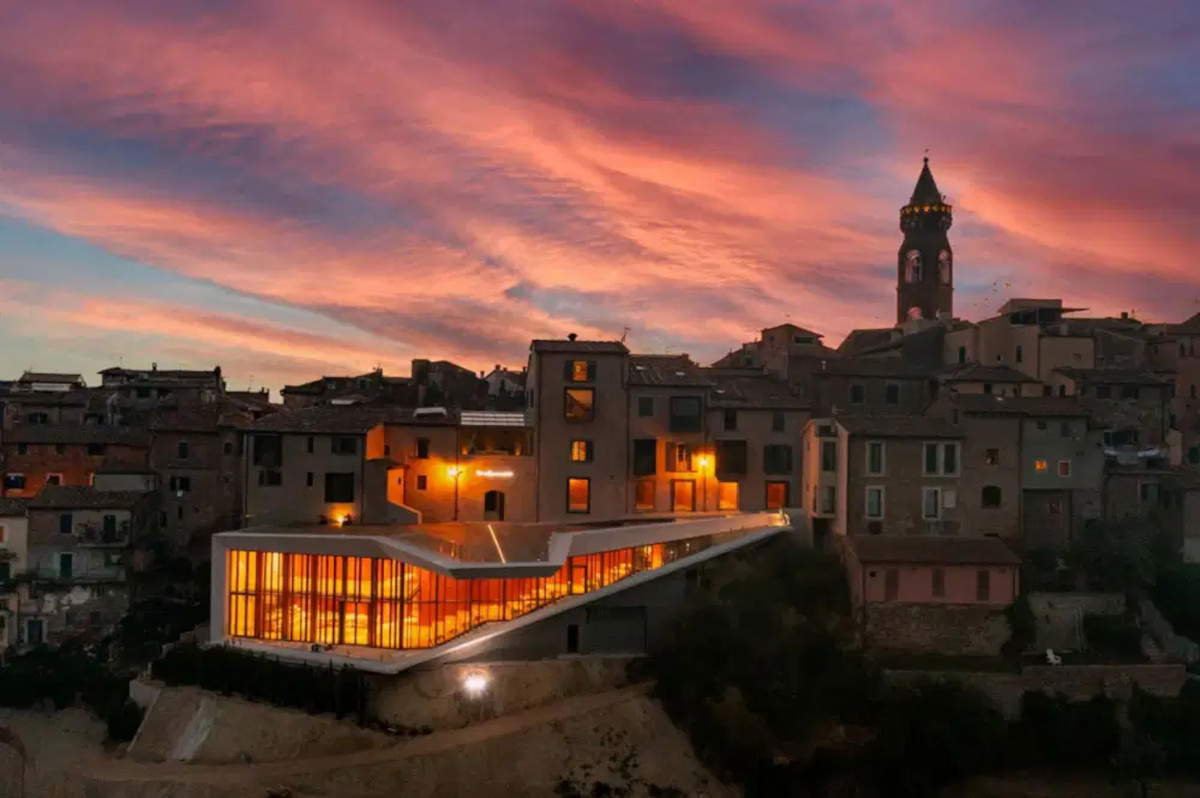
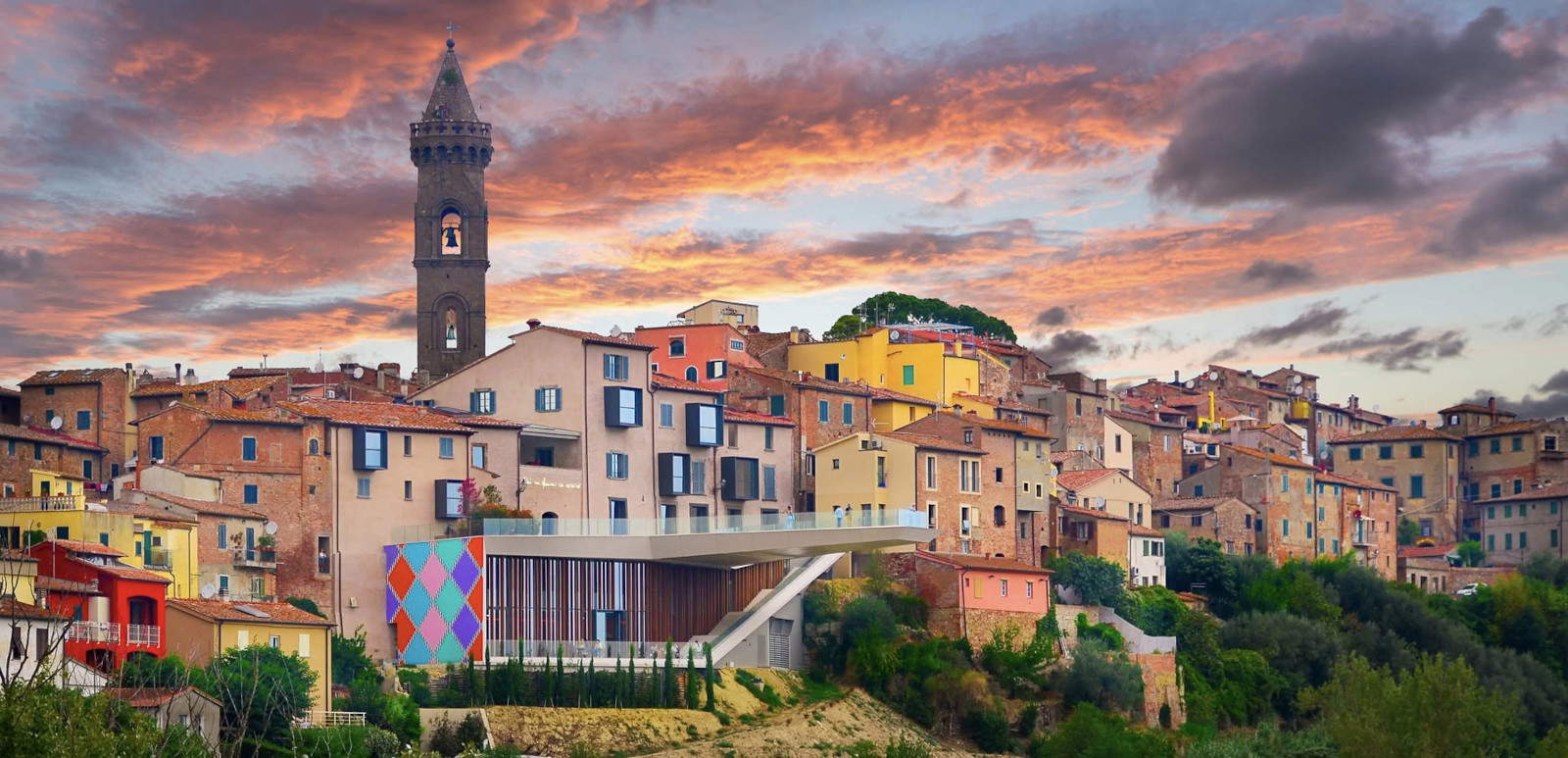
Palazzo Senza Tempo presents itself as a concrete example of adaptive reuse, capable of restoring centrality to a place through dialogue between past and future, respectful of the context and open to the community.
Today the palace hosts permanent and temporary exhibitions (until October 19, 2025 the exhibition Un Fantastico Altrove, by Lorenzo Mattotti, which is part of the project Thought Peccioli, whose theme for this year - crossing the things of the world - finds in Mattotti an ideal interpreter), cultural events and public initiatives, and has become a point of reference for citizens and visitors. A place suspended between history and innovation, where architecture does not erase, but enhances the traces of time.
“Peccioli is a real laboratory: our project, in fact, is a demonstration that historic centers can detach themselves from the past and live a new life through contemporary elements. The intervention, conducted with courage and kindness, makes the buildings part of the contemporary life of the area. This architecture, a bridge between the past and the future, is meant to be just a frame for this beautiful landscape, a landscape that looks like a 16th-century painting,” said architect Mario Cucinella.
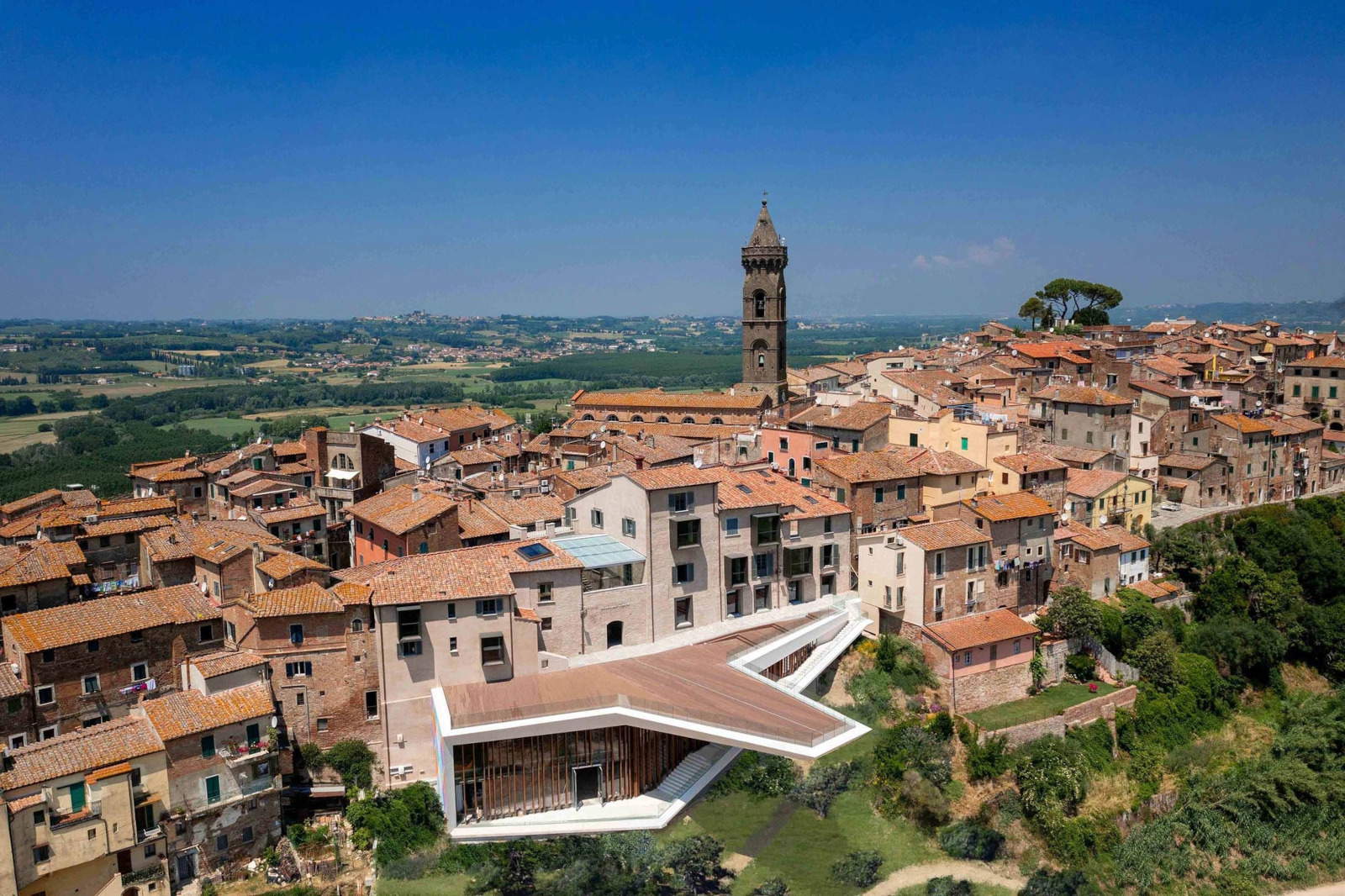
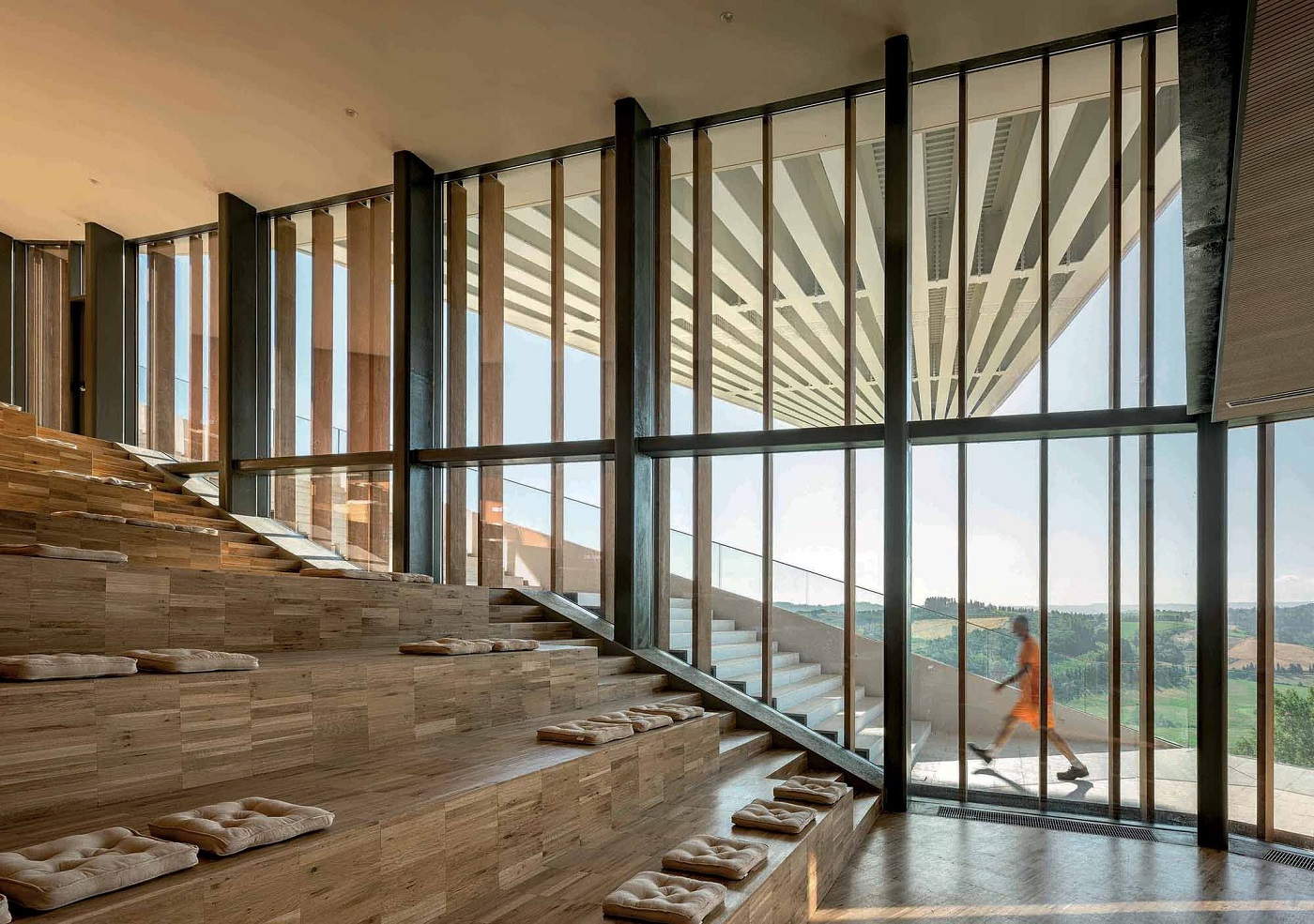
The history of the Palace has its roots in the 15th century, when the first documents attest to the existence of a farm and palace along Via Carraia. Initially owned by the powerful Salviati family, it was granted to Giovanni Falcucci, procurator of the noble family. In the 16th century the property passed to Piero di Alamanno Salviati, uncle of Cosimo I de’ Medici. Later, the palace was probably donated by Cosimo I to the Almeni family, originally from Perugia, as a thank-you for the family’s loyalty to its lineage. Among its most illustrious members was Sforza Almeni, secret chamberlain to Cosimo I, who donated to him in 1565 the Peccioli farm including all the estates. Upon his death, the estate passed to his brother Evangelista, a knight of the Order of Saint Stephen, whose presence is still remembered by the inscription “Ercules Almenius” surrounding the Almeni family coat of arms. The family’s last heirs were Isabella Nerli and Eleonora Bonaccorsi, who donated the entire property to Pietro Leopoldo, Grand Duke of Tuscany, and then to the Royal Treasury, which in turn gave it to the Berte family
Over time, the property then passed to Giovan Filippo Berte’s nephew, Edward Dufour, who chose the palace as his residence, as recalled by the arch of the main door, decorated with a wrought-iron rostrum with the initials “D B,” a sign of the union under a single lineage of the Berte and Dufour families. With the arrival of the twentieth century, the palace and farm became part of the Gaslini Foundation’s assets, after being acquired by the Roman company Fondi Rustici in 1919. In 2004, the Municipality of Peccioli, together with the investee company Belvedere S.p.A., acquired part of the estate and in 2019 began the profound renovation work designed by Mario Cucinella’s MCA studio, giving back to the entire community a precious and open place, a symbol of a new idea of architecture and shared beauty.
Photo by Duccio Malagamba and Andrea Testi.
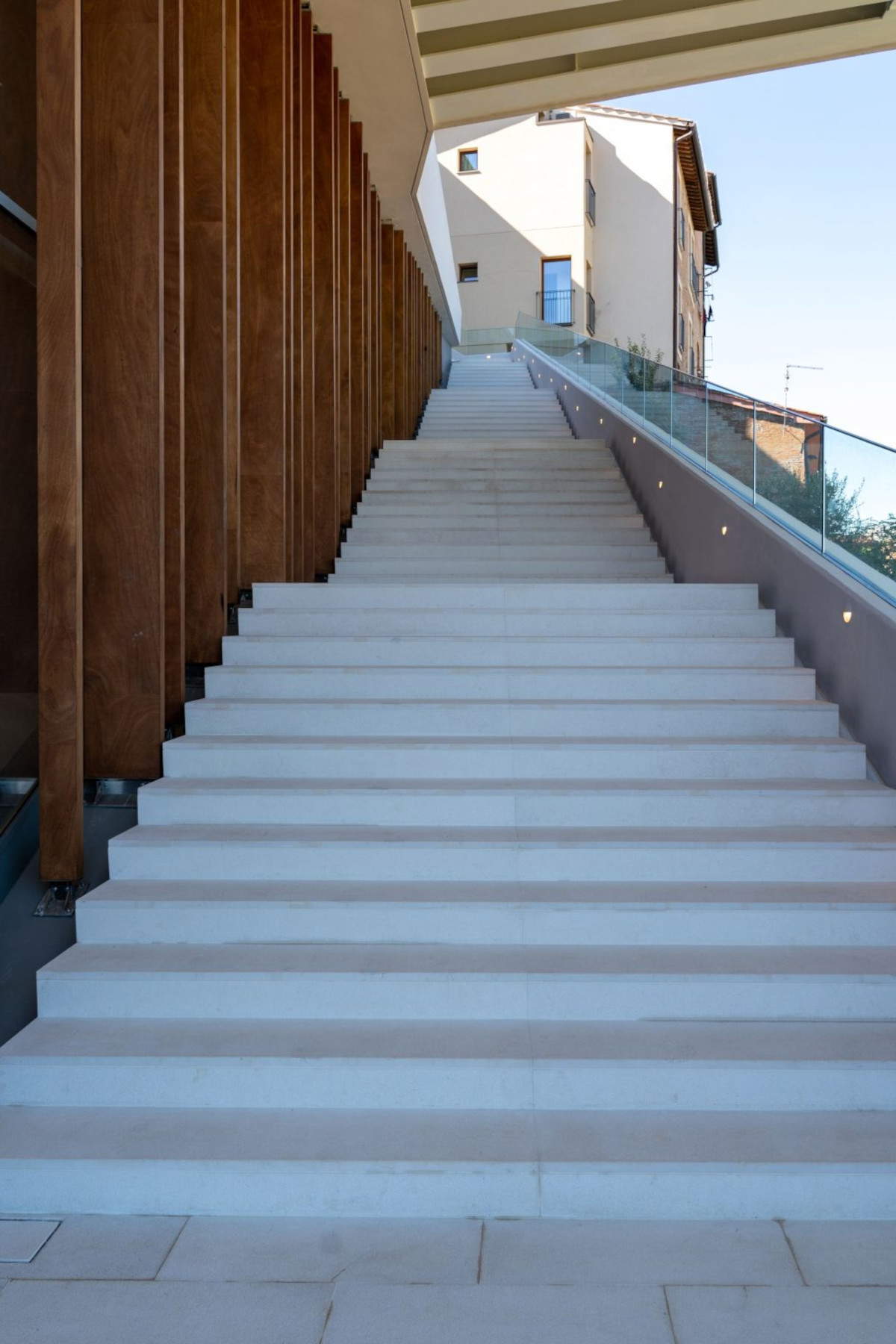
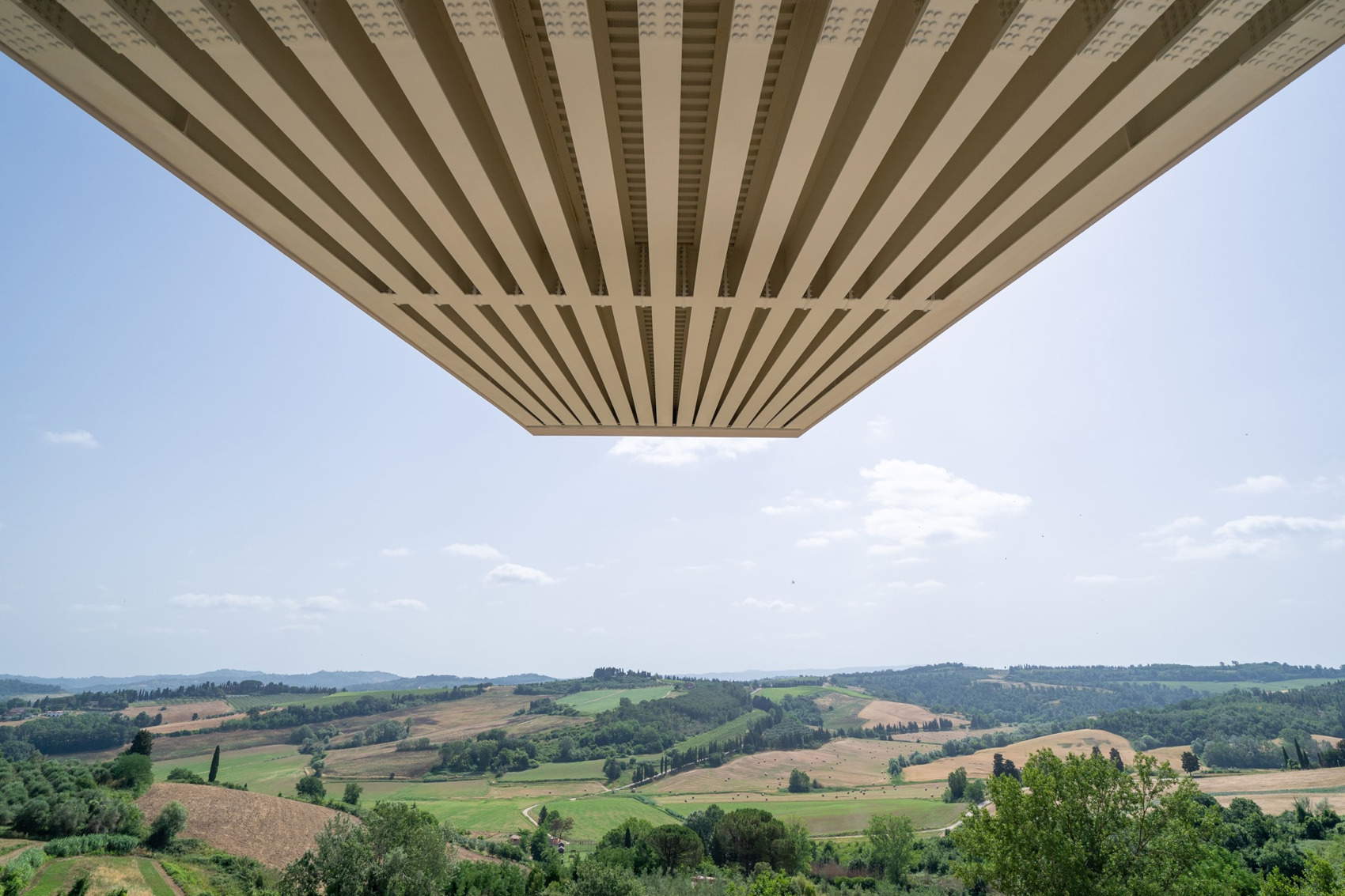
 |
| Peccioli's Palazzo Senza Tempo, a virtuous example of urban regeneration |
Warning: the translation into English of the original Italian article was created using automatic tools. We undertake to review all articles, but we do not guarantee the total absence of inaccuracies in the translation due to the program. You can find the original by clicking on the ITA button. If you find any mistake,please contact us.